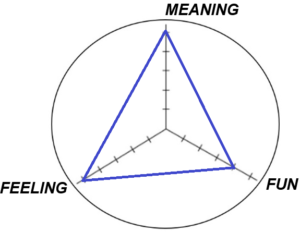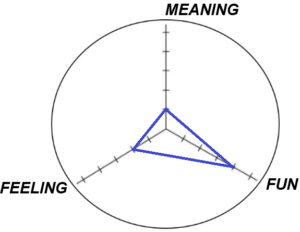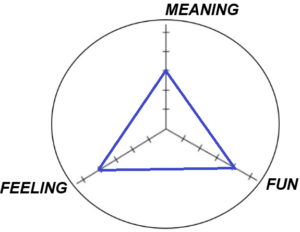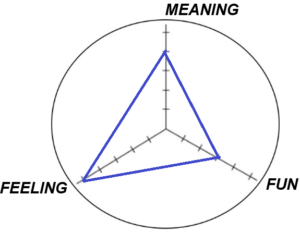The South African born Australian crime novelist Peter Temple died earlier this year. Here’s something I wrote in 2011, triggered by his writing.
When you read Australian crime novelist Peter Temple, it doesn’t take much to recognise he’s a very, very good writer indeed. What is harder to work out is what is going on in the book. Temple is clearly of the belief that he doesn’t need to tell the reader everything, and that it’s okay for reading to be challenging work.
One of the ways this manifests itself is in the syntax, which can be very broken, with sometimes long sentences that consist of fairly independent phrases separated by commas – the opening paragraph of his novel Truth being a good case in point:
On the Westgate bridge, behind them a flat in Altona, a dead woman, a girl really, dirty hair, dyed red, pale roots, she was stabbed too many times to count, stomach, chest, back, face. The child, male, two or three years old, his head was kicked. Blood everywhere. On the nylon carpet, it lay in pools, a chain of tacky black ponds.
Apart from the stylistic interest, the paragraph contains lots of intriguing information. But where exactly are “them” – outside on a bridge or inside a flat? Had the first word been “overlooking” rather than “on”, the situation could’ve been clearer. And there are two dead people, right? The stabbed girl and the boy whose head was kicked in.
Or so I thought, except that the dead boy has not been mentioned again, despite some fairly detailed discussions around the murder. In fact, as further information about the girl is revealed, it looks increasingly unlikely that she would’ve had a child with her.
Temple doesn’t always make it clear where his character is in space and time, making jumps that require the reader to keep his wits about him. He also thinks nothing of piling on references to characters and events that the reader cannot know about, without bothering to explain. This isn’t helped by the sheer number of characters – we meet seven in the first two and a half pages. By page 10, we’ve met 15 characters, most of whom have speaking roles.
This all may sound terribly negative, which it isn’t… Not necessarily, at least.
This particular book has the singular distinction that it won Australia’s Miles Franklin Literary Award for 2010. It was the first crime novel ever to get this prestigious prize. Temple has already cleared up on the crime writing awards, and now seems poised to follow suit in the world of more highbrow literature.
So the issue is not one of poor writing, but one of writing per se. One of the key characteristics of narrative is that as a writer you’re paying out facts in a single line. You’re trying to make a tapestry, but can only show the reader one strand of wool at a time. The reader has to build the picture himself.
The writer has to decide how much help he’s going to give. When you introduce a new character, for instance, do you immediately give the reader some information to place that character into context, or do you leave it to them to figure out over time.
You can even deliberately make it impossible to figure out. The piling on of incomprehensible detail can add greatly to the feel of a book, creating a feeling that there is a greater reality in the fictional world beyond the scope of what is shown, which also tends to heighten the insecurity of the characters and the tension in the story. This is a characteristic of science fiction in general and is particularly effective in the stories of William Gibson.
There are also, probably as a matter of necessity, things a reader cannot and must not know to maintain the tension in the book, e.g. what’s going to happen next in a thriller or who did what in a whodunit.
Despite this, my personal preference is for optimal clarity from moment to moment, even if I’m being bamboozled by the larger framework of the plot. For instance, I love Nabokov, but have never gotten more than 30 or so pages into Invitation to a Beheading, despite at least four attempts to read that book over the last 20 years. I find it unbearably frustrating when as a reader I get lost in space and time. If I don’t know what’s going on for too long, my patience runs out, sorry.
Strangely, I love Philip K. Dick, where there are dizzying shifts of reality at times. And I read and enjoyed Kafka in my youth.
Still, I prefer it when writers help readers follow what is happening as it happens, and not get confused between characters, for instance. Having two characters called Faraday and Farrelly (if I remember correctly) is not insurmountable, but in Temple’s The Iron Rose this kind of naming had me paging back and forth, which wouldn’t have happened if one had had an obviously different name. An editor at Random had once cautioned me against having two characters called Erica and Esther. Temple’s editor probably should have made a similar suggestion. Perhaps they did.
When introducing new characters, apart from making sure their names are clearly different, most writers would give the reader information to explain how that character fits into what’s happening, and/or give the character a strong identifying feature that can be used later to remind the reader who this is. For that reason secondary characters are the ones who, much more than main characters, tend to have scars, heavy accents, big moustaches, deformed limbs and such.
As with characters, when a narrator makes mention of an event such as the “Kirby affair”, I’d expect an explanation of what the Kirby affair was – unless it was a news or historical event a person who would read that book can be expected to know about. Some writers seem to write as if the reader knows as much as the characters or narrator. This can be a factor of incompetence or design.
In the case of Peter Temple, one can only assume he does it by design. He’s far too accomplished a writer to make such elementary mistakes. In the one and a bit book of his I’ve read so far, the characters, dialogue, narrative voice and sense of place all bear the mark of an exceptional talent.
As for his habit of leaving the reader ignorant… I don’t know.




